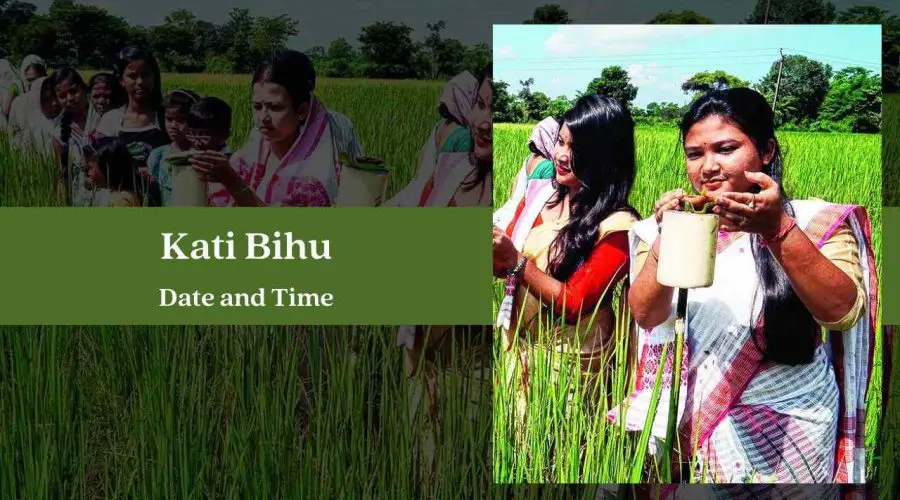Kati Bihu 2023 Date, Time, And Significance
Kati Bihu or Kongali Bihu is observed on the first day of the seventh month of the Assamese calendar, the month of Kati. This Bihu is marked by a sense of solemnity due to the scarcity of produce during the festival’s duration.
Compared to the other two Bihu festivals of the state — Rongali and Bohagi Bihu — this one is the most solemn. It is the time of year when the granaries of farmers are typically vacant and there is little food available. Kati Bihu is observed in the month of October, during the replanting of rice seedlings.
As Assam is primarily an agricultural state with rice as its primary crop, Bihu holds a special position in the hearts of the Assamese people. In Assam, ‘Kati Bihu’ is one of the three agricultural festivals celebrated by all people, regardless of their religion, caste, or language.
The other two Bihus are Magh Bihu in January, which is marked by a feast after a successful harvest, and Bohag or Rongali Bihu in April, which is a sowing festival celebrated at the beginning of the Assamese New Year and spring season. While Kati Bihu is associated with crop protection and the worship of plants and crops, the animistic Kati Bihu is the festival’s other manifestation.
On this Bihu, people pray for a bountiful harvest by lighting earthen lanterns in front of the Tulsi plant, the storage, the garden, and the paddy fields. Farmers affix a unique type of lamp known as Akash Bati to the poles, which are then set in paddy fields.
Kati Bihu Date 2023
Wednesday, 18 October 2023
Celebrations on Kati Bihu
In the evening of Kati Bihu, earthen lamps are lit in homes, agricultural fields, and the Granary. Each home lighted a lamp made of earth in front of the tulsi plant. The Tulsi plant is cleansed and planted on Tulsi Bheti, a specially designed earth platform. They gather near the Tulsi plant, chant prayers, and collect Mah prasad, which consists of Boot (a type of pulse, gramme), Mogu (a type of bean), and fruits such as banana, coconut, apple, sugarcane, jackfruit, etc.
The most attractive aspect of this Bihu is the lighting of lamps known as Akash Bati in paddy fields, which represents the cultivation community’s prayer for the health of their crops. There is a scientific justification for using these varieties of lamps. These lamps entice insects from the rice fields, which are then consumed by the lamps’ flames. This helps the crops remain wholesome and insect-free.
Significance of Kati Bihu
Kati Bihu is one of the three most important Assamese festivals, along with Bhogali Bihu and Rongali Bihu. On this day, the goddess Laxmi, who is revered for distributing prosperity to mortal souls, is honoured and welcomed into homes. Under the Tulsi plant, residents light earthen lamps outside their homes.
The tradition of igniting the lamps dates back to ancient festivals, when the lanterns on the paddy field served as a natural insecticide by attracting insects. Traditional lamps, known as’saaki,’ are affixed to the tops of bamboo sticks in order to illuminate the ancestral residence. Every family makes an offering, which is followed by the illumination of more earthen lanterns in the granaries, gardens, and paddy fields and prayers for a bountiful harvest.
The combination of these lamps with the spinning of bamboo poles while reciting rowa khowa chants is believed to ward off pests and evil eyes, resulting in a bountiful harvest.
The entirety of the state celebrates Kati Bihu with tremendous sincerity. It is one of the few festivals in India that transcends religion, social status, and caste, as individuals from all aspects of life gather to observe the solemnity of their circumstances.
The day is a fitting tribute to the principles of nature. From nutritious sustenance to healing sunlight, nature provides us with everything. The harvest cycle is dependent on the changing of the seasons, and with Kati Bihu, we celebrate the autumn that enables us to plant seeds. So that we may bear produce in the spring.

